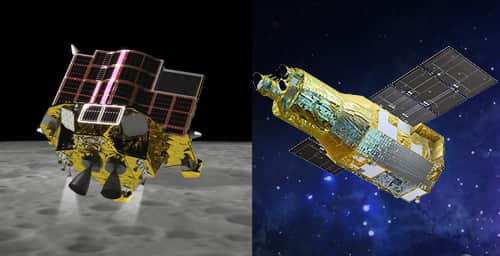The postponement date is still yet to be revealed
The Japan Aerospace Exploration Agency (Jaxa) was expected to send their flagship H-IIA rocket at 9.26am Japan Standard Time (12:26am GMT) yesterday (28 August).
Jaxa was supposed to send two missions into space- one being a new X-ray telescope, the Moon Sniper, to spy on some of the hottest parts of the universe. The second mission, known as Slim, is a small robotic moon lander called the Smart Lander for Investigating Moon.


However, Mitsubishi Heavy Industries (MHI) suspended the launch less than 30 minutes before the planned liftoff from the Tanegashima Space Center in southern Japan due to strong winds in the upper atmosphere.
In a statement, MHI said: "Mitsubishi Heavy Industries, Ltd. (MHI) has postponed the launch of the H-IIA Launch Vehicle No. 47 (H-IIA F47) which carries aboard XRISM and SLIM produced by JAXA due to the fact that the upper winds did not meet the launch conditions.
"The new launch date and time will be announced once confirmed."
The XRISM satellite is a joint mission between Jaxa and Nasa as well as with some contributions by the European Space Agency to reveal the universe in X-rays.
The mission aims to look at the structural formation of the universe and the evolution of galaxy clusters as well as the history of material circulation, energy transport and circulation in the universe.
The space agency said XRISM would “elucidate the processes of matter circulation and energy transport in the high-temperature regions of the universe, as well as the evolution of astronomical objects”.
Its Slim mission aims to demonstrate high-precision landing on celestial bodies, as it aims to land with an accuracy of upto 100m compared to conventional lunar landers whose accuracy is “several or sometimes a dozen kilometers”. MHI’s launch unit chief Tatsuru Tokunaga said any potential launch could not happen sooner than Thursday due to processes such as re-fuelling of the launcher.
MHI and Jaxa have said the next launch date could be as late as 15 September, according to Reuters.
https://news.google.com/rss/articles/CBMiX2h0dHBzOi8vd3d3Lm5hdGlvbmFsd29ybGQuY29tL25ld3Mvc2NpZW5jZS9qYXhhLWphcGFuLWZvcmNlZC1zdXNwZW5kLWxhdW5jaC1tb29uLWxhbmRlci00MjcxOTA50gEA?oc=5
2023-08-29 12:21:46Z
2358915434
Tidak ada komentar:
Posting Komentar